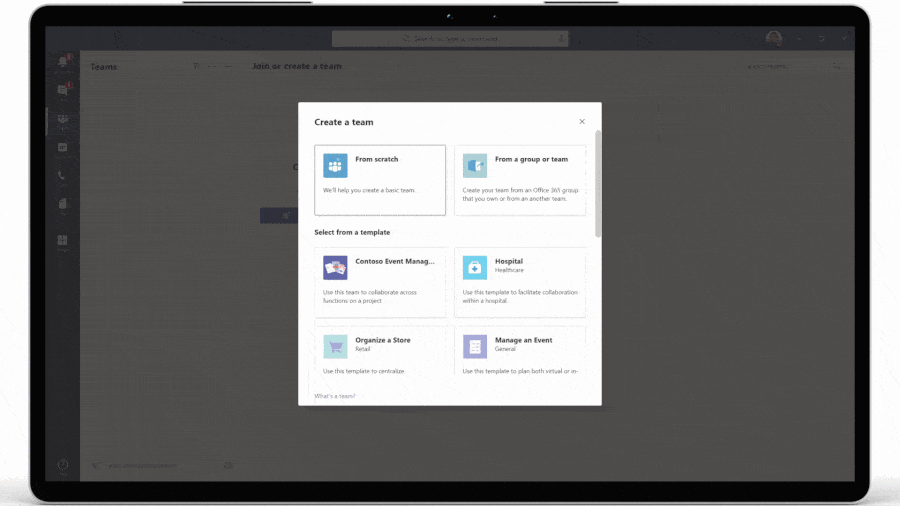This year, Microsoft has put an intense focus on Teams. Through the COVID-19 pandemic, the usage of Teams has skyrocketed. With lockdowns easing and people returning to in-person work, how will Teams continue to grow and be a useful asset to organizations around the world? Microsoft outlined this direction at last month’s Build 2020 conference.
While the usage of Teams skyrocketed due to its video-teleconferencing (VTC) features, Teams is more than merely video or text chat. Teams is about synergy, a place for your organization to meet virtually and work collaboratively. It has become a place to capture discussions and move projects forward. While most of us are back at the office, Teams is valuable for connecting employees around the country, the world, and even the same building.
Teams integrates with Microsoft 365 products, including OneDrive, SharePoint, Excel, PowerPoint, and Word, to name a few. Most of us do not want to add complexity to our lives; the future of Teams is about integrating disparate systems into one central hub. Microsoft recognizes the potential of Teams as an organizational hub, and the features announced at Build 2020 move in this direction. In short, Teams is becoming a platform in its own right.

What's New
Power BI Integration
- New to the Power BI interface is a Share to Teams button, enabling reports and charts to be exported directly into Teams. Share these reports with other Teams users via a dedicated tab inside of a channel or team. This process saves users from navigating to a separate app (on mobile devices) or a new web page (on desktop devices).
Teams admin center
- Deploying new applications across an organization just got a lot easier. Administrators can now manage pre-installed apps across a tenant – for new and existing users. This ability ensures standardization and assists with onboarding new employees.
- Approve application installation requests
- Buy application licenses in bulk
- Set user-level Teams policies in an organization for background effects. Want a blurred background for all Teams conversations? That is available. Want no filters or to exclude custom backgrounds? That’s available too.
Templates
- Microsoft has made a set of templates available for everyday use cases, including bank branches, crisis response, hospital wards, and event management. When creating a new channel, users will be presented with available options. Each template comes with apps, channels, and instructions on how to use it.
- Custom templates are created within the Teams admin center. This ability provides admins and IT professionals with powerful tools to implement standardized business processes. Teams templates work in concert with Power Automate. One use case example is PayPal, which has a process where new Teams channels are auto generated for employees.
Teams app development
- App development is a significant area of focus for Teams right now. To support this, new Visual Studio and Visual Studio Teams extensions provide the ability to create applications and configure features. There are a host of other uses for these, including building project scaffolding, creating an app manifest, setting up hosting, validating an app package, and starting the app publishing process.
- Publish apps via App Source for public consumption, or internal use only.
Power Platform Integration
- Add Power Virtual Agent chatbots with the click of a button. A bot template is available to expedite this process.
Teams and Skype Interoperability
- Teams and Skype for Consumers (SFC) now work together on desktop, web, and mobile clients. Interoperability includes chat and video calling. Users on Teams can find Skype users by email address, and vice versa.
Summary
These are just a few of the great new features that Microsoft is rolling out for Teams. Others include an attendance report and a new meeting launcher interface that is rolling out over the next few months. For more in-depth details on some of these features, head to What’s New in Microsoft Teams. That will provide you with additional reading on the latest updates.
At Dynamic Consultants Group, we depend on Teams to keep our employees around the country connected and serving our customers. Contact us today for more information on Teams and how we can integrate it with other exciting products in the Microsoft portfolio such as Dynamics 365 and the Power Platform.



